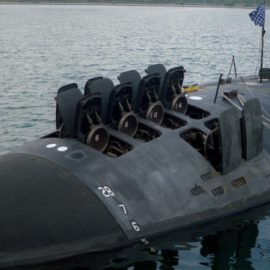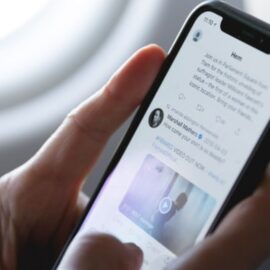

This article is an excerpt from the Shortform book guide to "The Culture Code" by Daniel Coyle. Shortform has the world's best summaries and analyses of books you should be reading.
Like this article? Sign up for a free trial here .
Why is it important to embrace vulnerability in the workplace? What can you, as a leader, gain by fostering a culture of vulnerability in your organization?
Vulnerability is the cornerstone of effective teamwork. When team members are comfortable showing vulnerability in the workplace, it sends a message: “I am not perfect, and I know that your feedback can help me.” This develops a collective sense of trust: “We can show the areas where we struggle and help strengthen each other.”
Read about the benefits of vulnerability in the workplace and the problems that could arise when it’s missing.
The Importance of Vulnerability in the Workplace
Vulnerability is the exposure of personal weakness followed by a call for help or support. Embracing vulnerability in the workplace requires humility, especially on the part of the leader. When team members (and leaders in particular) are willing to admit their weaknesses, team trust is strengthened, which in turn facilitates collaboration.
The Benefits of Vulnerability in the Workplace
Benefit #1: The Development of Trust and the Removal of Insecurity. Once team members are willing to express a need for assistance, they develop trust and are able to address issues head-on without the obstacles of self-doubt or competition.
The Red Balloons
In 2009, the Defence Advanced Research Projects Agency (DARPA) created a challenge to explore the best ways to prepare for potential future attacks. They released 10 red balloons in secret locations throughout the United States and offered $40,000 to the first team that could locate all of them.
Across the country, various teams began preparing, creating new search engine software, constructing teams of software engineers and hackers, and tapping into existing information networks. One team from MIT, however, did none of the above, had next to no funding, and only began preparing mere days before the challenge launched, yet managed to win the challenge within 9 hours.
How did an underfunded, underprepared team win a near impossible challenge in mere hours? The team at MIT created a website that invited people to join their team with the promise of $2,000 to the person who found each balloon, $1,000 to the person who invited that person, $500 to the person who invited the person who invited that person, and so on. When all was said and done, 4,665 people aided in MIT’s effort to find the balloons.
The team succeeded through the promotion of the vulnerability loop. By granting payouts to the people who made the invites as well as the individual who made the discovery, they created a vulnerability loop driven by financial incentives. It promoted asking for help as a prize was available even if you did not make the actual discovery.
On other teams, financial incentives were only given to people who made the actual discovery. This led to selfish behavior as inviting friends to help with the process could cost participants a payout.
Benefit #2: Quick and Cooperative Decision-Making. Vulnerability is the cornerstone of trust in the workplace. With trust, team members can act quickly and cooperatively, even in high-pressure situations. The group is able to move as if part of a well-oiled machine, with each cog of the machine fulfilling its purpose and relying on the other cogs to fulfill theirs.
Log PT
In training, the Navy SEALs go through a series of exercises known as Log Physical Training (Log PT). In Log PT, a team of six trainees gets pushed to their limits through a variety of exercises in which they carry an unwieldy telephone pole.
Success in these exercises relies on coordination and cooperation. When Log PT succeeds, the movement between exercises seems simple and fluid. When one teammate struggles, the team takes on additional weight to support them until they regain balance. Each trainee relies on their teammates to support them in their times of weakness and vice versa.
Log PT forces trainees to make choices for the betterment of the group instead of personal advancements. This lesson applies to battlefield demeanor as SEALs must be able to work as a singular unit and support one another in life-or-death situations.
Benefit #3: Collective Problem-Solving. Vulnerability often reveals problem areas, and open feedback produces a variety of potential solutions through collective insight. Feedback via committee curates opinions from team members with different backgrounds, expertise, and experience that allow the group to determine the best route forward.
Inspirational team members can help individual projects flourish through surfacing. Surfacing is the process of bringing tensions and solutions to the surface through a series of questions and conversations. Through surfacing, team members can begin to look at the problem in different ways and spot different directions for their projects.
BrainTrusts: Feedback via Committee
At Pixar, the director of a project receives feedback through a series of meetings called BrainTrust meetings. In these meetings, producers and other directors pick apart the film in detail. Through an analysis of the film’s flaws, the team begins to determine the best ways in which the film can improve.
BrainTrust meetings require extreme levels of trust and vulnerability. Directors must be comfortable exposing a project they are passionate about to intense scrutiny. Though the process is often frustrating and painful, the resulting product improves drastically.
Benefit #4: Preparation for Future Issues. Vulnerability does not only apply to immediate issues or projects. Through a willingness to have plans picked apart, team members can make future obstacles easier to overcome by planning for problems before they occur.
SEAL Team Six
In its 2011 operation to kill Osama Bin Laden, SEAL Team Six rehearsed multiple downed helicopter scenarios in preparation for their raid. The officer in charge of the mission showed vulnerability by admitting there were potential issues with the initial plan—particularly surrounding the use of untested stealth helicopters.
This was ultimately the saving grace of the mission. When invading the compound, one of the helicopters crashed, but the soldiers managed to adapt and succeed. Thanks to the vulnerability exhibited by the officer in charge before the mission, the soldiers were prepared.
The Consequences of a Lack of Vulnerability
Human nature pushes us to hide our flaws. When team members hide flaws, they put all of their energy into that concealment, leading to insecurity and defensiveness.
| When Vulnerability Is Present | When Vulnerability Is Absent | |
| Communication | Team members work openly and cooperatively, freely exchanging ideas and concepts. | Team members work in isolation, keeping their ideas to themselves. |
| Feedback | Team members are willing to accept and invite feedback, thus improving their output. | Team members grow defensive when receiving feedback, thus leading to errors in their output. |
| Cohesiveness | Team members support one another, embracing responsibility when at fault and helping coworkers when they falter. | Team members blame one another for issues, unwilling to admit personal fault or support others in their hardship. |
Consequence #1: Insecurity Takes Over. When team members fear vulnerability, they allow their insecurity to dictate their behavior. A culture that prohibits vulnerability tends to punish people for showing weakness. As a result, team members get insecure about their performance and become defensive. They reject feedback and fail to see errors in their own logic, robbing the group of the opportunity to fix issues.
The Ambush
After completing an arduous journey, Dave Cooper, a former Navy SEAL, received an order from his superior that required their team to travel back to base in the middle of the night. Cooper objected as nightfall would exacerbate the dangers of potential ambush points and mine-laden stretches of the route. After a screaming match between the officer and Cooper, the officer eventually used his rank to end the conversation, rejecting Cooper’s feedback in the process.
On their way back to base, the vehicle was ambushed. Overwhelmed and left with no other choice, the team had to surrender—fully expecting to be killed by their attackers. Much to the surprise of the team, the attackers decided not to execute the American soldiers, but took their weapons and disappeared into the night.
The mission almost resulted in the deaths of four soldiers because the commanding officer allowed his insecurity to dictate his behavior. He became defensive and treated feedback as an attack on his competence as a commander. Had he been comfortable with vulnerability, he would have accepted feedback and planned for potential issues, and they may have avoided the incident.
Consequence #2: People Don’t Notice Issues. When vulnerability is punished, team members do not seek out feedback. Without the use of feedback, the team robs themselves of the opportunity to fix issues that they had not noticed before.
The Ad Proposal
Kyle is on the brink of a promotion and has an idea for a new ad campaign. He has spent weeks developing materials and believes that this package will be the final key to the promotion he’s been after for quite some time. He wants to get some feedback on his work before he takes the proposal before the executive team, but the advertising team hasn’t developed a workplace environment in which vulnerability is permitted. In fact, the last time Kyle asked for help, he was berated by his boss and told that he should know how to do his job by now.
With this in mind, Kyle decides to take his proposal straight to the executives of the company. The CEO of the company opens to the first page and immediately notes that there’s a clear misspelling on the proposed marketing material. He then states that, if the advertising team won’t even take the time to review their own work, he won’t take the time to read through it. This slip-up ultimately costs Kyle the promotion and hurts his relationship with the executive team. Had Kyle’s team been more accepting of vulnerability, he may have asked for feedback that likely would have revealed something as simple as a spelling error.

———End of Preview———
Like what you just read? Read the rest of the world's best book summary and analysis of Daniel Coyle's "The Culture Code" at Shortform .
Here's what you'll find in our full The Culture Code summary :
- Why safety, vulnerability, and purpose are at the heart of a healthy group culture
- What makes some organizations more successful as a whole
- How one of the largest unsanctioned cease fires came one Christmas Eve during WWI






